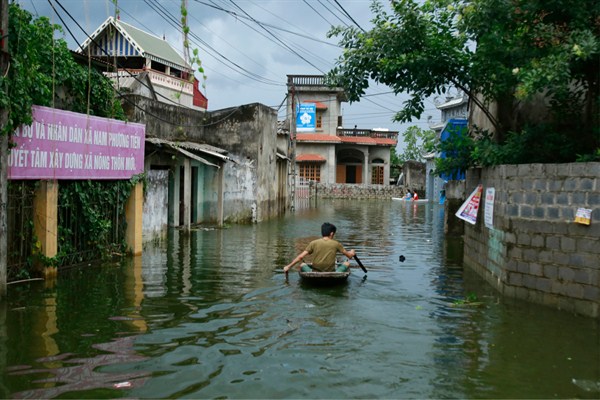Rising seas will endanger more than 300 million people in the next 30 years, according to a startling new study published in late October in the journal Nature Communications. By 2050, the impact of rising sea levels will be much more severe than previously thought, “threatening to all but erase some of the world’s great coastal cities” in low-lying areas from Egypt’s Nile Delta to southern and eastern China to Southeast Asia, as The New York Times put it. One of those cities is Ho Chi Minh City, the economic hub of Vietnam, which could be underwater along with the rest of southern Vietnam by mid-century, as these new projections suggest. Many coastal regions across Southeast Asia would be doomed. Yet despite this imminent danger, Southeast Asian countries are lagging behind in preparing for the deluge.
Researchers and government officials have long known that Southeast Asia is one of most vulnerable regions in the world to climate change. The Global Climate Risk Index, calculated by a prominent German NGO, lists four Southeast Asian states among 10 countries around the world most affected by climate change during the last two decades. From Myanmar to the Philippines, many heavily populated areas in Southeast Asia sit near sea level. Long coastlines that are vulnerable to flooding are regularly battered by natural disasters like typhoons and tsunamis. The tropical region can barely afford major rises in temperature, which could render already brutally hot cities like Bangkok unlivable outdoors.
But the new findings, by researchers at the New Jersey-based organization Climate Central, are terrifying even to people who already knew Southeast Asia faced a grim future. Climate Central’s researchers used a more nuanced method of measuring elevations to more accurately calculate the effect of rising sea levels on coastal areas. The researchers relied on artificial intelligence to make better elevation measurements than previously existing calculations. After developing these more accurate elevations, the researchers were able to better project sea rise in the coming decades, showing how imperiled much of Southeast Asia will be by mid-century.

